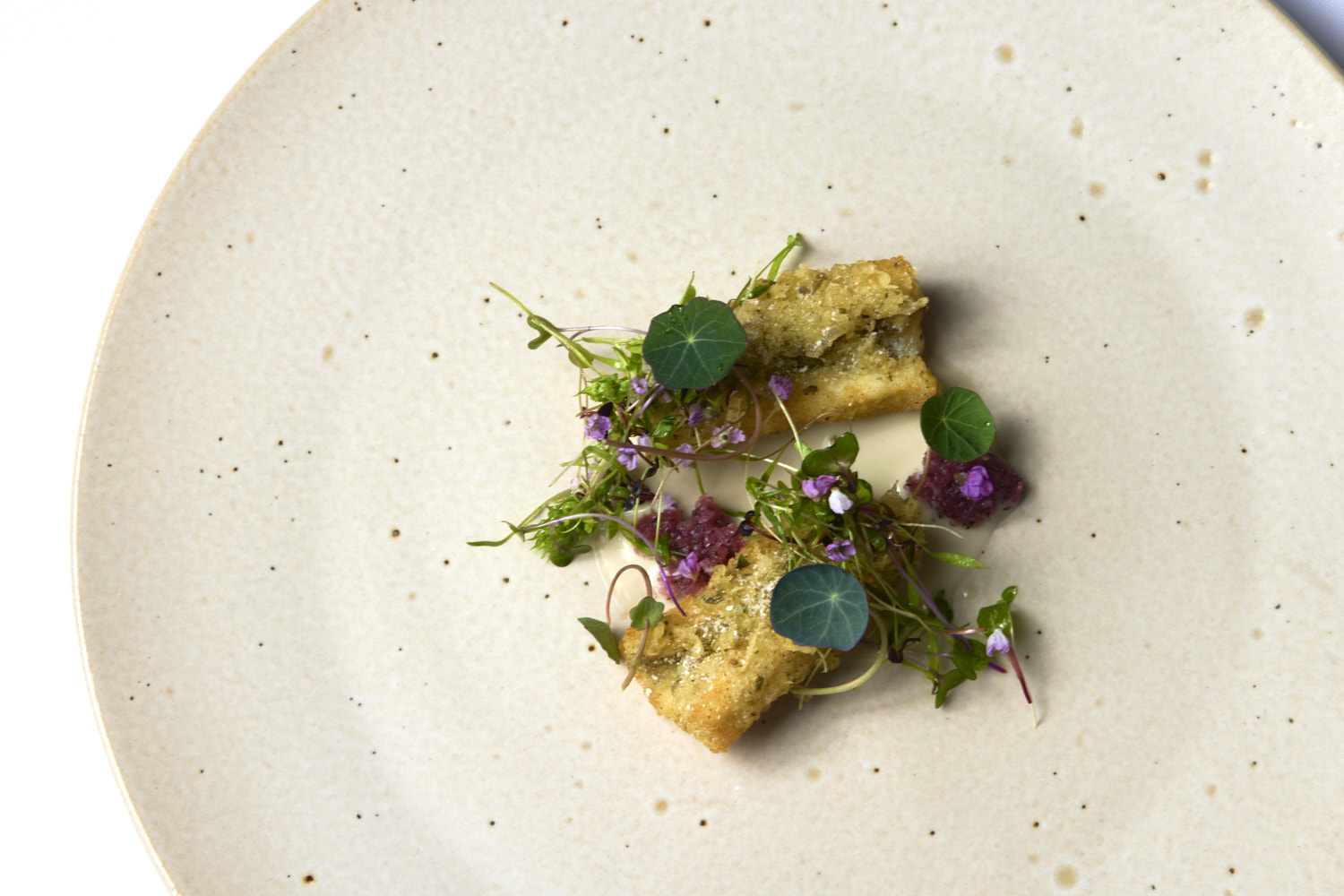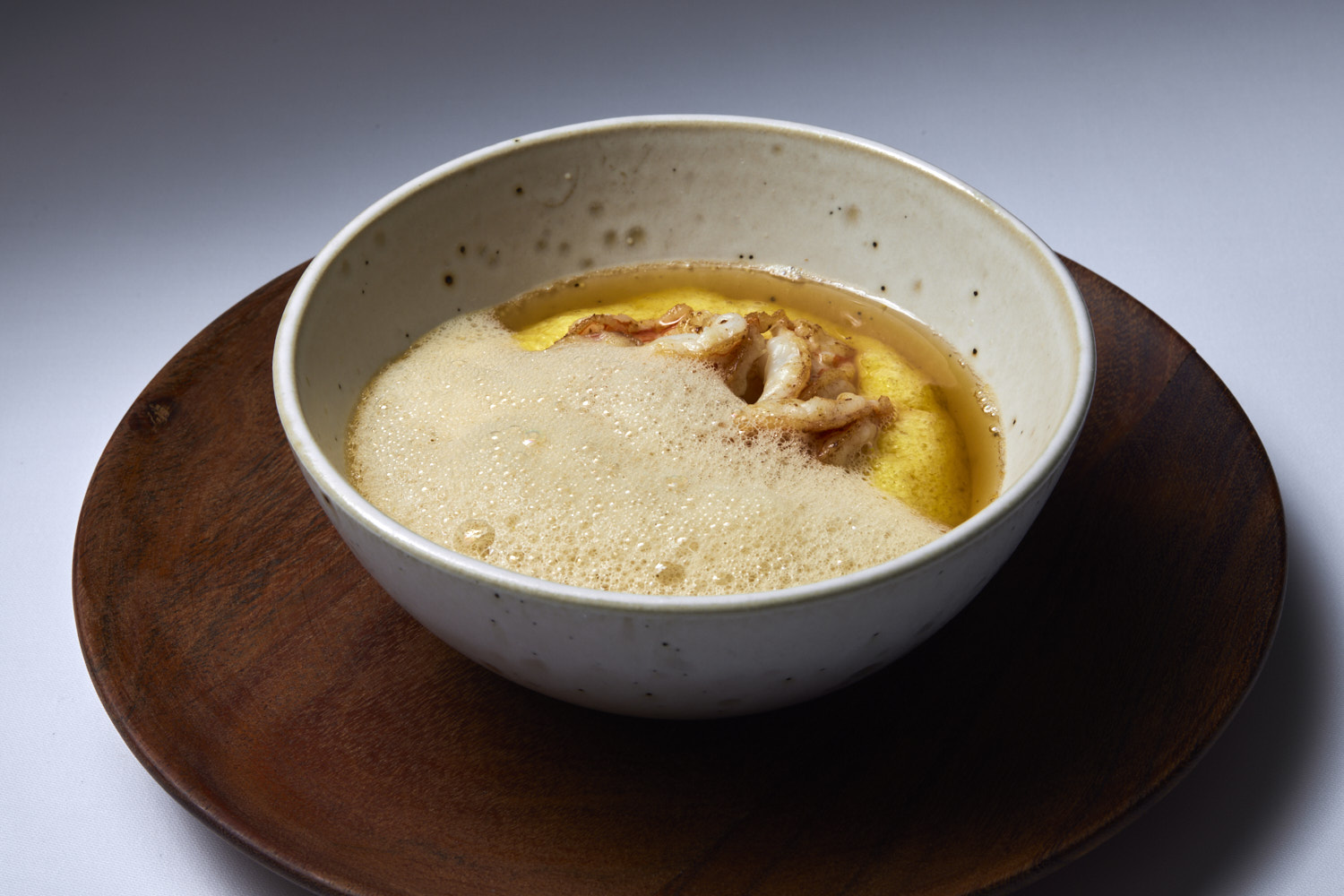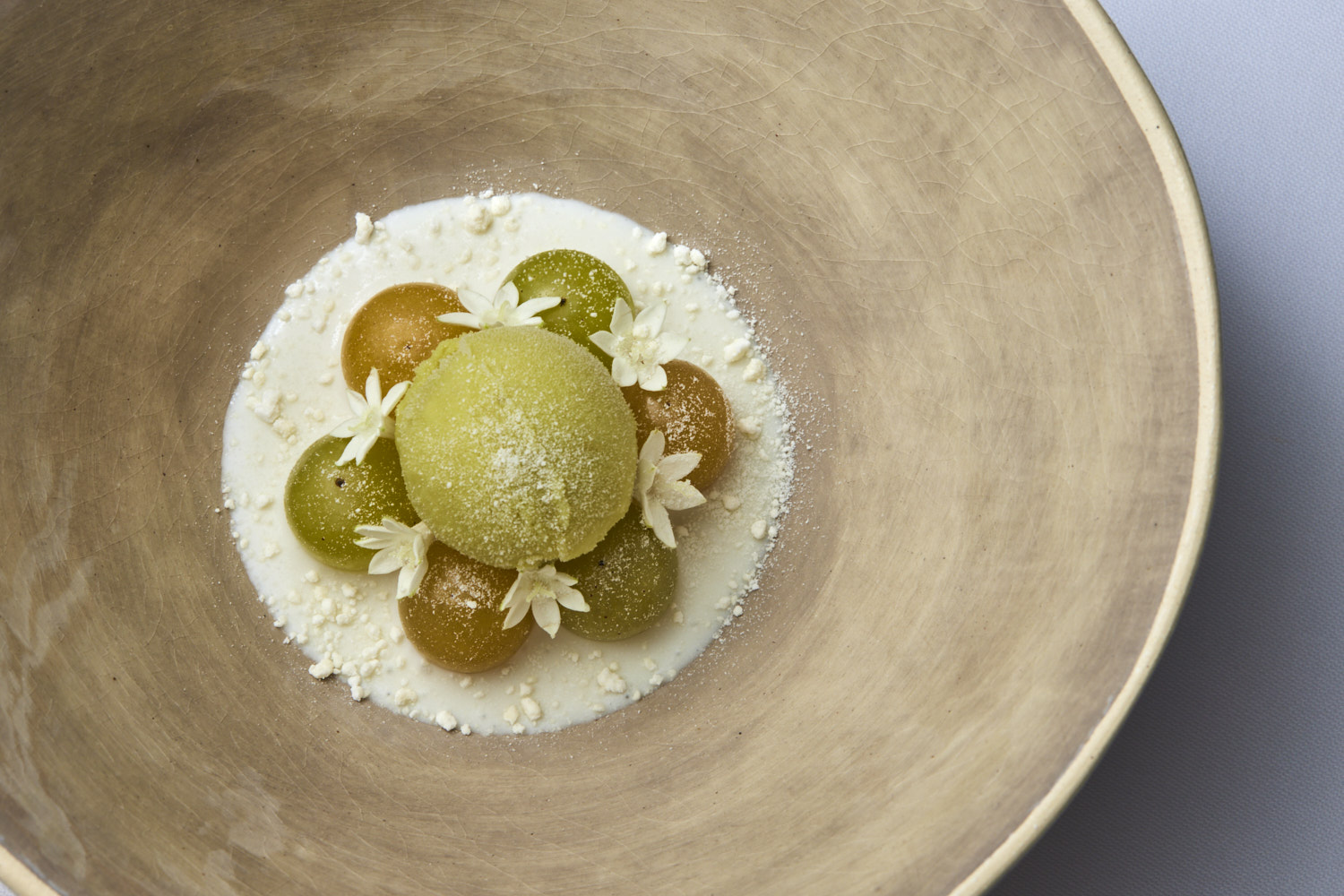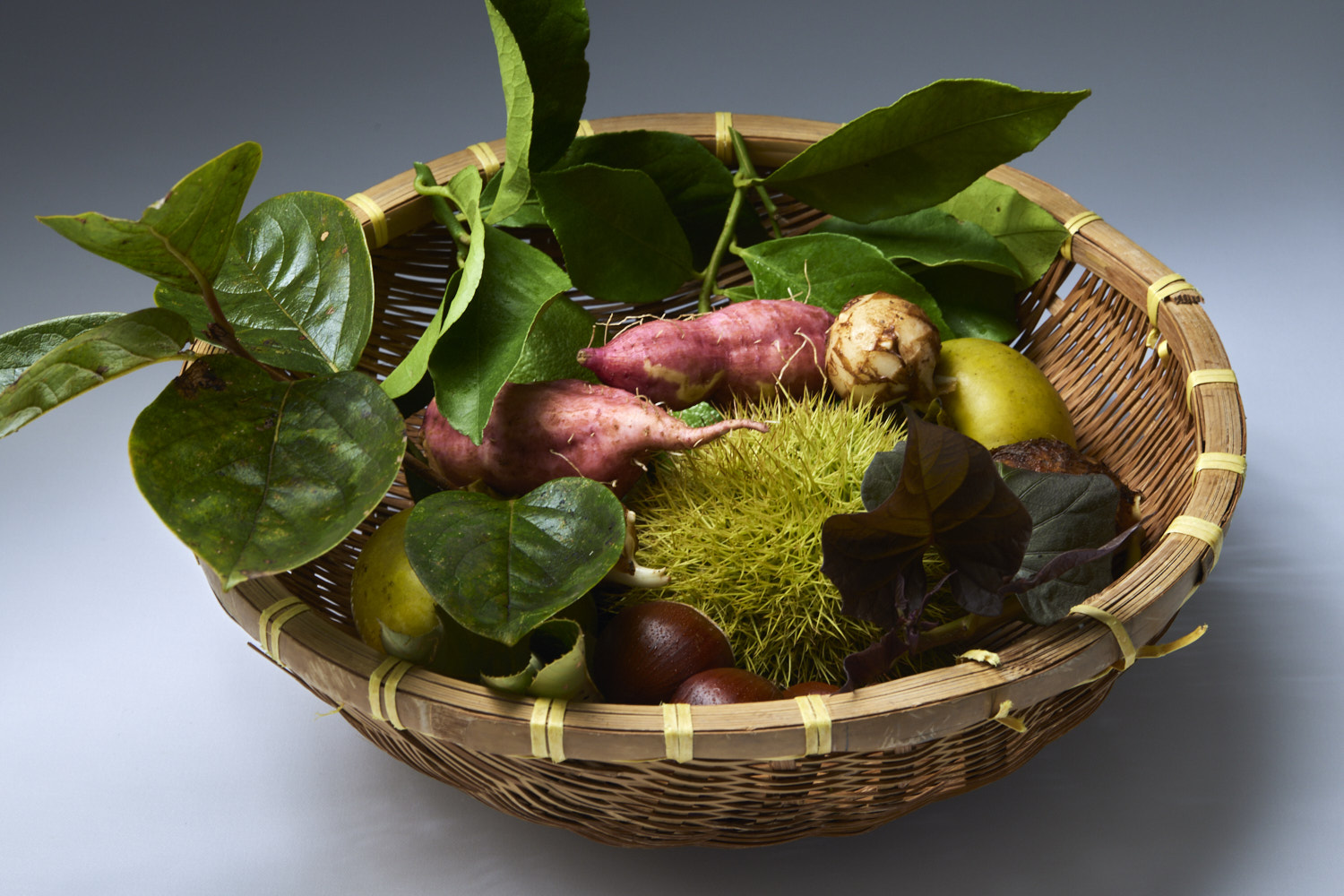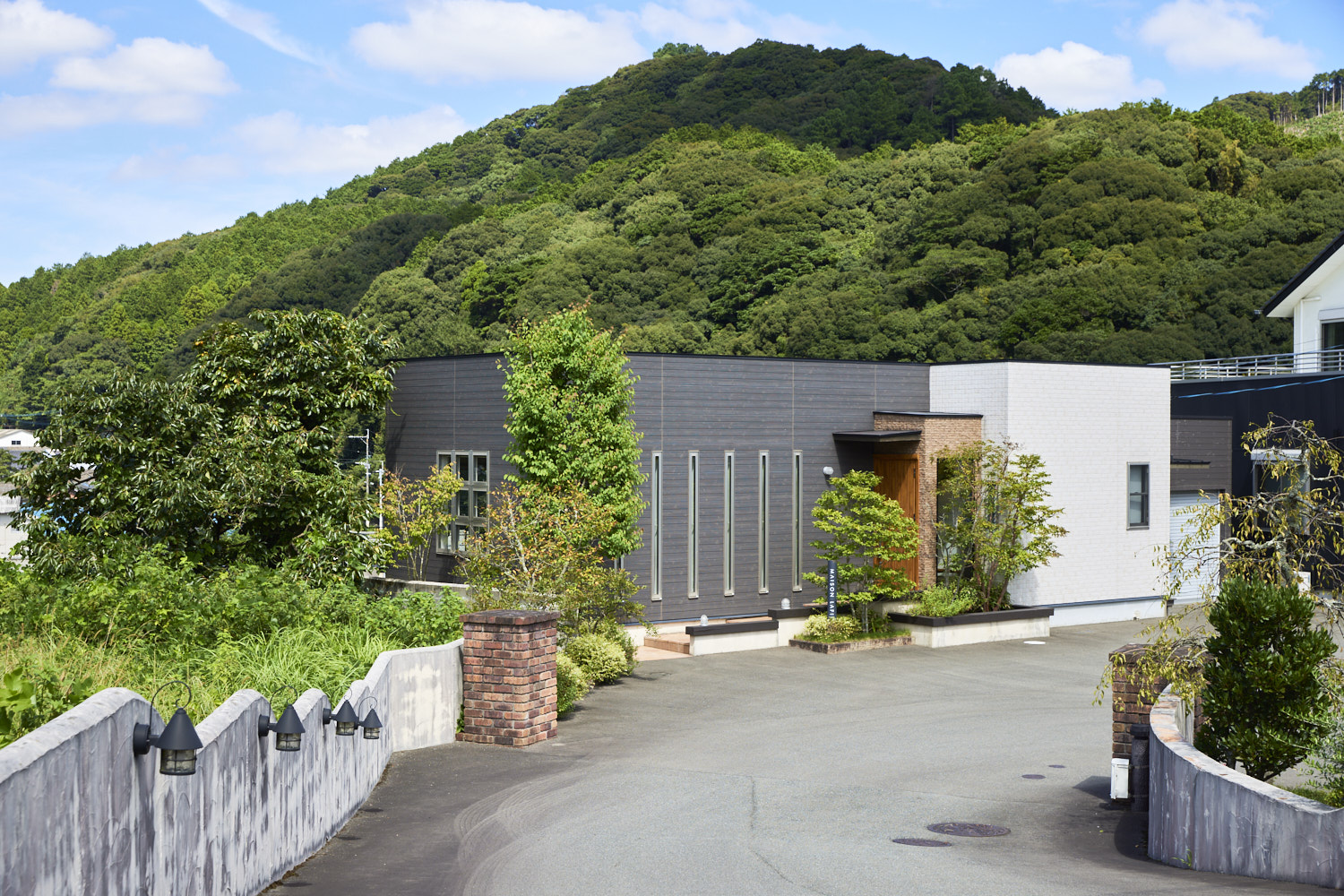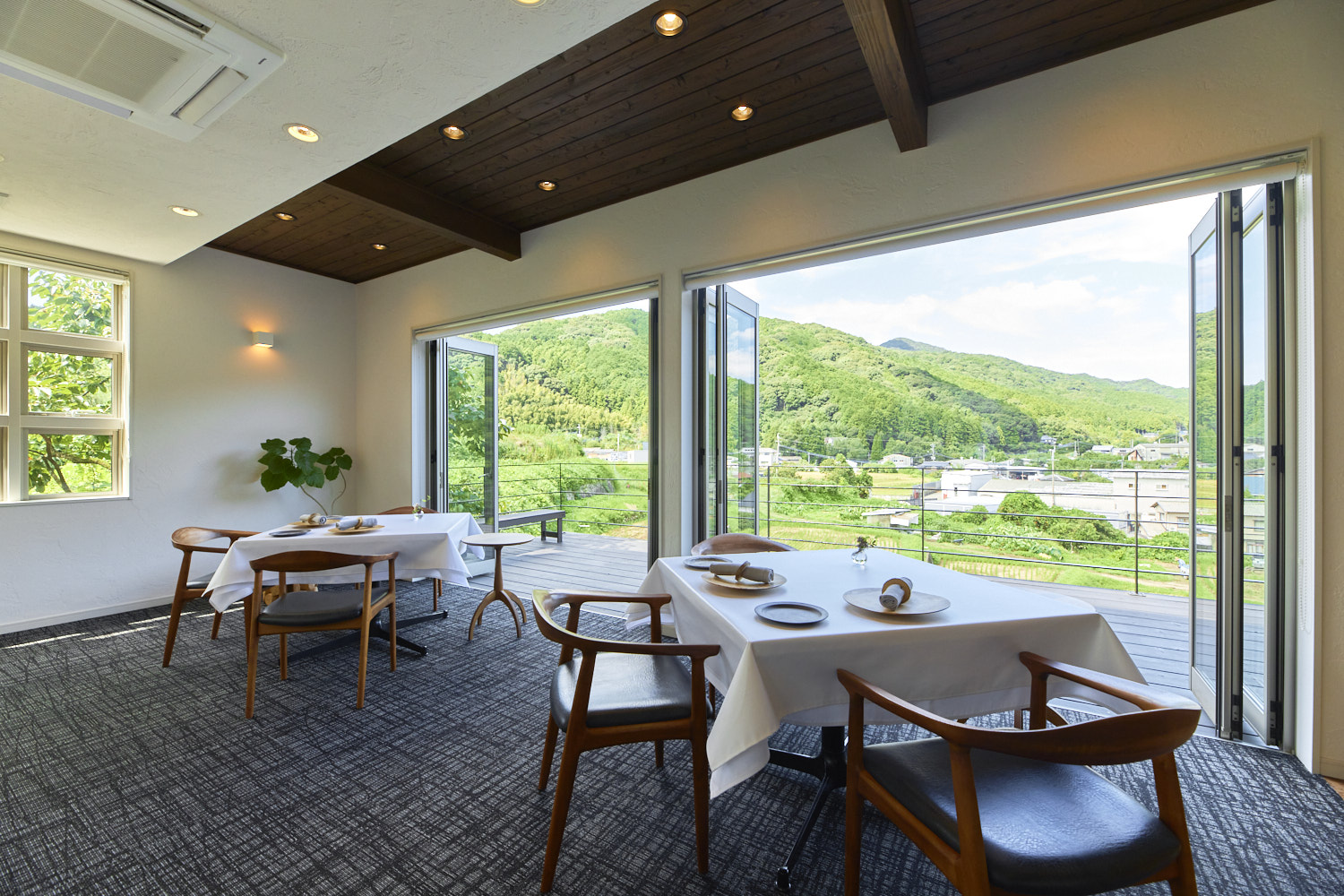
Fukuoka
Maison Lafite
メゾン ラフィット
High above the hills of Nakagawa City, Maison Lafite overlooks a beautiful river valley, its 3,300-square-meter estate surrounded by fields and orchards. Welcoming only two groups of guests per meal, Chef Ken Kudo curates an exquisite French menu, built around fresh ingredients harvested on the property. While local gastronomy has become popular in recent years, Maison Lafite continues to embody the pioneering vision it began more than seventeen years ago, serving a cuisine rooted in the terroir of Kyushu.
Opened in 2008, Maison Lafite is located about 30 to 40 minutes from Fukuoka Airport and Hakata Station. The picturesque drive through the lush countryside becomes part of the anticipation. Known for its clear streams, the city of Nakagawa offers firefly watching and ayu fishing, as well as small soba and udon shops.
The building, designed by Kudo himself, blends seamlessly into the lush landscape. A persimmon tree stands by the entrance, its motif echoed on the welcome plate. The glass-
walled dining room opens to a sweeping view of the valley below. The light shifts gently through the day, and when the glass doors are opened during the warmer months, a cool
mountain breeze drifts in.
Kudoʼs cuisine echoes the landscape outside the window. Recalling his childhood dream of becoming an artist, he paints his dishes with ingredients, using deep greens in summer and
the warm hues in autumn. The dishes are served on Arita, Imari and Hasami ware as well as vintage Scandinavian ceramics collected over the years.
Welcoming guests alongside Kudo is the restaurantʼs manager, a friend of the chef for more than twenty years. Together, they offer wine pairings that center on Burgundy while introducing Kyushu makers such as Kikka from Kumamoto and Tsuno Wine from Miyazaki. The restaurant also offers an original selection of non-alcoholic drinks such as roselle syrup
with seasonal fruit vinegar and spiced cola made from local fruit.
CUISINE
From Soil and Stream to the Plate
“Our cuisine has three themes: earth, water and seasons,” Kudo explains. “Earth represents dishes rooted in Nakagawa. Water draws on the regionʼs clear streams. Seasons express the
constant change in nature around us. The menu follows the ingredients, with recipes emerging only once the produce arrives.”
The omakase unfolds over a dozen courses, and takes as long as three hours to savor. It begins with a light amuse-bouche; a pumpkin puree sponge cake, its black hue drawn from bamboo charcoal, and accompanied with cream cheese, figs, Nichinan caviar and sunflower petals.
The chilled vichyssoise-like soup is made from Tawarama potatoes and topped with chips, watermelon, sweetfish confit from the Chikugo River, finger lime, edamame and verbena. The poached Amakusa egg brings out its natural sweetness and is served with hollandaise infused with chicken stock and breadcrumbs flavored with cumin, turmeric, garam masala and sun-dried tomatoes. Grated Amakusa almonds and a fritter of rosemary add contrast.
Tsushima Island conger eel is fried crisp and served with a vin blanc sauce made from its own bones and white wine, complemented by red onion and shiso herbs. The dayʼs flan is made from Satsuma sweet shrimp from Akune. The meringue-like custard arrives with butternut squash, followed by a broth of grilled flying fish and local chicken consommé poured at the table.
A hearty ragu of wild boar and locally caught octopus is served with rigatoni, maitake mushrooms and hand-picked green seaweed from Amakusa. For the main course, a tender
fillet of Toyonoka Queen Beef is cooked in a pan, oven and over straw. The dish is served with peanuts and mushrooms, bringing together flavors of autumn.
Dessert offers a gentle close: milk and pistachio ice cream made with dairy from Aburayama Farm, served with verbena and white wine jelly, Shine Muscat grapes and a single white Egyptian starcluster flower.
INGREDIENTS
Many of the vegetables, fruits and herbs are grown on the restaurantʼs property. Chestnuts, lemons, persimmons and bamboo shoots grow in rhythm with the seasons. The Amakusa Mango eggs from Kumamoto, raised on a diet of dried mangoes, are known for their deep vermilion yolk and rich flavor. Rice comes from Itoshima, cultivated on land owned by Kudoʼs family. Rare Amakusa almonds are used throughout the meal.
Seafood is sourced across Kyushu. Seasonal catches such as conger eel, grouper and squid arrive fresh every morning. Satsuma sweet shrimp come from Akune, sea urchin from Karatsu and octopus from the Kanmon Straits. The caviar is sourced from Nichinan in Miyazaki.
For meat, Kudo likes locally raised Toyonoka Queen Beef and Komeshiagegyu. Game meat such as venison and wild boar appears on the menu seasonally. Asaji lamb from Oita is a rare
Dorper breed with a clean and mild flavor.
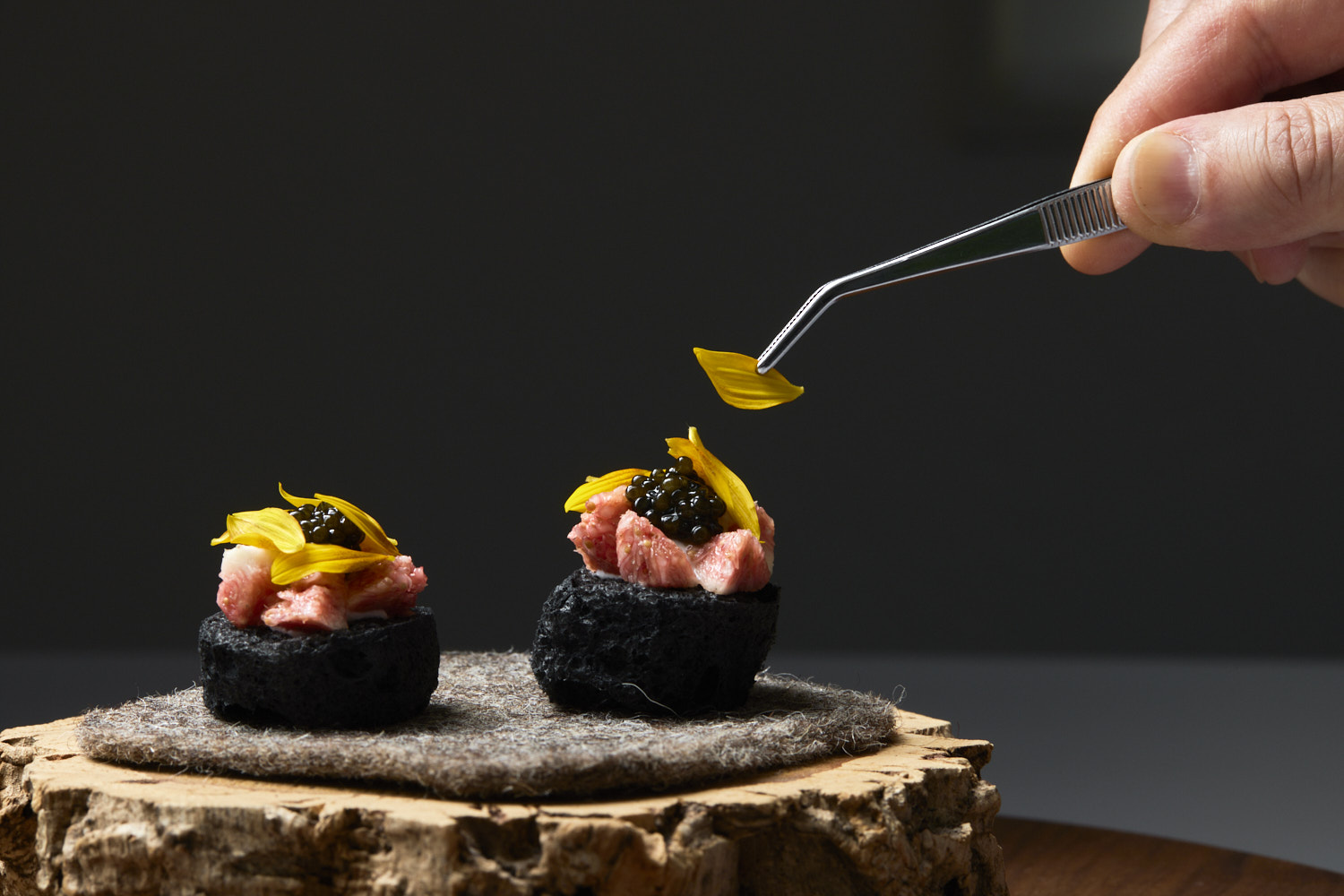
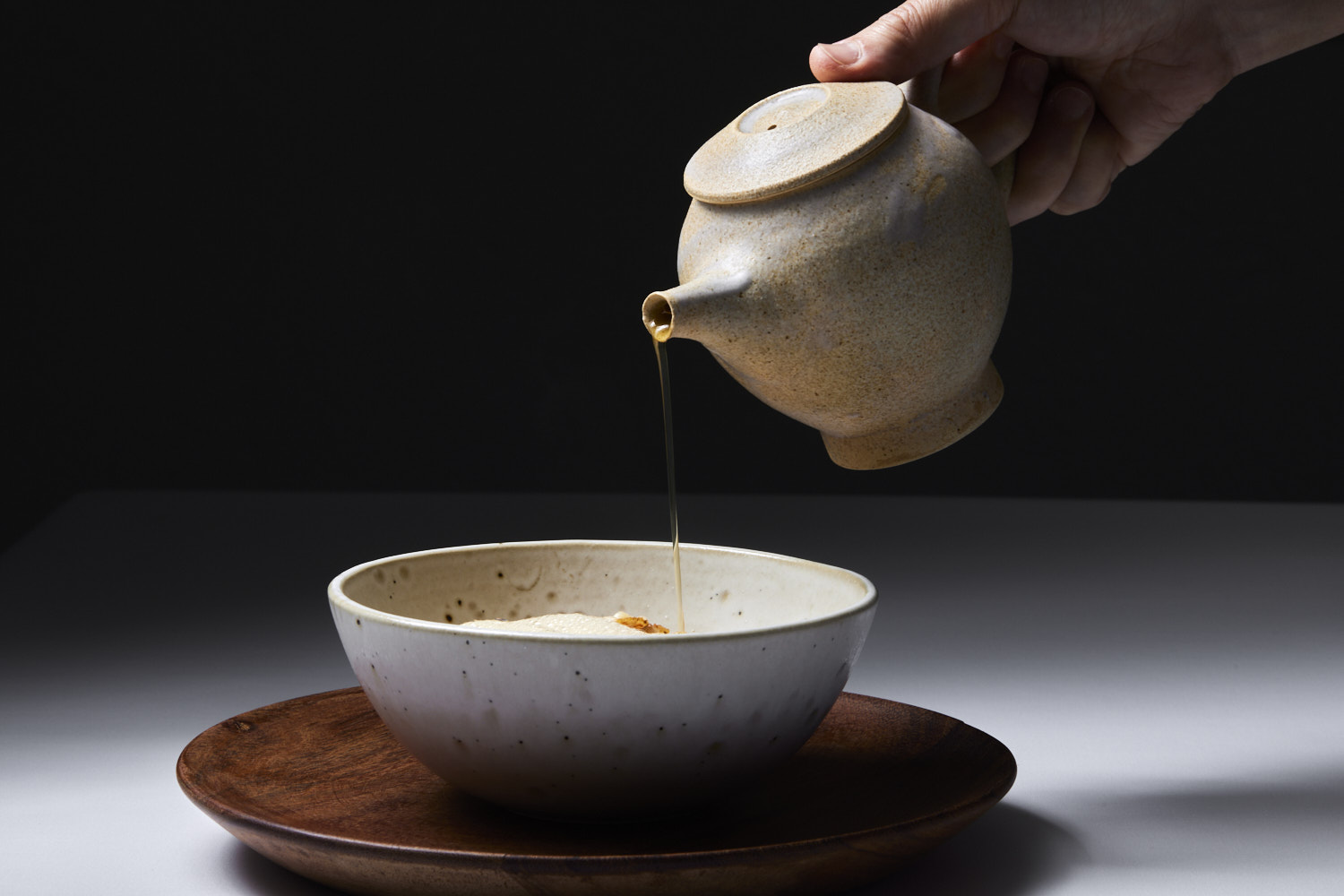
CHEF
Ken Kudo
The Property
Maison Lafite sits on a 3,300-square-meter property surrounded by sloping fields and forests. Kudoʼs home stands beside the restaurant, and over time the land has become both a pantry and a garden. What began as a handful of crops now thrives in abundance, harvested steps away from the kitchen.
The fruits and vegetables used in the cuisine come from these fields, cultivated by Kudo, his family and staff. Every fall, they gather to pick chestnuts beneath the colorful leaves. It is this
shared labor that defines the spirit of Maison Lafite, a restaurant where cuisine, land and community co-exist.
Course
- The price includes our booking fee of ¥8,000
- The price includes our booking fee of ¥8,000




